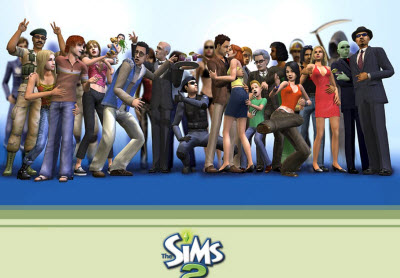
Will Wright, the creator of blockbuster franchises like SimCity and The Sims, discussed the future of games at the Game Horizon Live event in a live webcast this week. During his Q&A session, he discussed a wide variety of topics about where games are going.
Wright said that he was inspired by the “Cambrian” explosion of games (as in the meteoric growth of life during that epoch in Earth’s history) that has come from indie game development on app stores for smartphones, tablets, and other platforms.
Wright co-founded Maxis and created games like SimCity. Electronic Arts acquired the company in 1997, and Wright went on to create titles like The Sims and Spore while at EA. He left Electronic Arts in 2009 and set up a series of startups. His latest company is Syntertainment, which focuses on creative play and the interaction between entertainment and reality.
Wright has won multiple awards and was inducted into the Academy of Interactive Arts and Sciences’ Hall of Fame, and in 2007, he became the first game designer to receive a British Academy of Film and Television Arts (BAFTA) award. For young game designers getting started, Wright advised them to study nongaming fields so they can get more creative inspiration. Here’s an edited transcript of a portion of the Q&A with Wright at Game Horizon 2013. This is part two (click here for part one).
 Game Horizon: Do you think there’s a disconnect between the people who design games and the people who are playing them?
Game Horizon: Do you think there’s a disconnect between the people who design games and the people who are playing them?
Wright: A lot of people design games for different reasons. If you talk to different game designers, it depends on where they are, what company they’re in, if they’re in a startup situation, and things like that. Some just want to build a successful company. They don’t really care what kind of game they make. They’re trying to figure out what the hot genre is. Other people are much more into artistic expression. These are more like your indie game developers. They want to push forward the state of the art in game design and try new, weird, interesting things. They want to strike out and discover new genres. Some people are very wedded to a particular genre. “I want to do the coolest first-person shooter set in World War II that’s been done so far.” It’s much more of a craftsmanship approach.
At the end of the day, as a player, you want to sit back and have a good time and enjoy whatever it is. I think that Sid Meier said once that sometimes game designers design games for players, and other times they design games for themselves. I think I’ve been guilty of that a couple of times. I’ve learned from that, as I step back.
With SimEarth, which was a game I did many years ago, I got really into the simulation. I spent all this time getting the climate connected to geology and things like that. From the player’s point of view, they didn’t see under the hood. They didn’t see all these bits and pieces moving around and how beautifully it worked together, this wonderful clockwork. For them, all they saw were these graphs and things. Playing SimEarth was like being put into the cockpit of a 747 in a nose dive with all the gauges spinning. They were pushing the controls around, trying to come up with some association between their input and the outputs. The simulation was too complex, I think, for players to enjoy and learn from. As a designer, I got totally into the simulation and forgot about the player. That was something I learned a lot from. So that does happen a lot.
Right now, the market is so immediate and so Darwinian. With the metrics that we’re able to collect from players, we’re able to discover within a few hours where players are getting stuck, what they’re enjoying, what things are surprising us about their activities in the game. We’re able to learn from players so much more quickly that it creates a much tighter iteration loop.
GH: Do you engage directly with your audience? Do people contact you and ask you questions and you reply, or is that just overwhelming?
Wright: [I engage] as much as possible. One of the most important roles for any game being released today is community management. Listening to the players, getting a sense of what the consensus is from the players, and responding back to them. Part of that is just care and feeding of the community. If they understand that you’re listening, you can spin it from going bad and turning into a flame war to bringing them on to your side and making them into your evangelists. Another big part of that is understanding what they’re enjoying about your game. What are the things about your game that are most frustrating to them? How quickly can you respond to that and fix it? As soon as you can start the conversation with your community, then you’re working with them. They’re helping you develop the game. We have the technology and the metrics and the communications to do that now very effectively and very rapidly.
GH: You mentioned earlier the idea of player states, the different psychological states that a player can be in. Are there any particular states that you’d like to explore more? If you did that, would that lead to new game ideas, possibly?
Wright: Games, in some sense, started almost from the core brain, the reptilian brain. Early games were about aggression, defense, survival. The reptilian brain is what we were initially preying on because that was easy and effective. Now games are starting to get to the outer layers of our brain and a wider palette of emotions, and that brings the player into different states. A lot of games out there right now are very reflective or meditative, very relaxing, which is the opposite of the early games that were all about adrenaline.
Games are also more external to the player now. In other words, it’s about the player being sent into some world and dealing with things around them. One of the areas that we haven’t explored much that I’m very interested in is how we get players to get more of a sense of their internal states, their own psychology. What is it like to be inside their head? Games can extract a lot of that from individual players and allow players to see interesting reflections of themselves in the game, not just some external virtual reality, some fictitious world. These self-reflective games to me imply a certain mental state of self-awareness that I think we haven’t explored at all in games.
GH: Do you feel that narrative can get in the way of that kind of experience?
Wright: I think that there’s always going to be this tension between narrative and freedom or agency in games,. I could sit there and tell you a story. That’s a very passive experience. The chief strength of a game, though, the thing that almost defines a game, is the fact that you’re driving it. It is interactive, and you get to steer the situation. What I’ve kept with me from gaming are the unique stories that players have told me about things that they did in a game, things nobody else did. So I think of games more as a platform for players to play out stories than as a medium for the game designer to tell a story. To me, telling a story is almost, right off the bat, putting the player in a passive role.
As a game designer, I think it’s much more interesting to get on the path of “how do we teach our games to recognize the story that the player is trying to play out and then respond and support that story?” The game itself can become something of a director in the background, watching the player drive the story forward, and then try to support and amplify that dramatically.
 GH: Did you play Journey, which won lots of awards in the U.K. and the U.S. last year? I mention it because it found a very interesting balance between the narrative, which it tells you very little about – you discover it yourself – and this sense of emotion in the characters.
GH: Did you play Journey, which won lots of awards in the U.K. and the U.S. last year? I mention it because it found a very interesting balance between the narrative, which it tells you very little about – you discover it yourself – and this sense of emotion in the characters.
Wright: Yeah. I think Braid captured that as well. I’m not saying there aren’t ways to do that. It’s a very tricky thing, though.
GH: We see a lot of readers arguing among themselves about the danger of next-generation consoles delivering more advanced visuals but forgetting about the gameplay aspect – just giving us more flash. Do you feel like that’s a valid concern?
Wright: Historically, we’ve had this kind of arms race in the games industry. Graphics, pixels, polygons. If I look back to the games I was playing 20 or 30 years ago, when there were just a few little pixels on the screen that made up a character, somehow I still cared about that character. I was able to infuse that character with life. Looking at what we can do with modern-day equipment, we can build these beautifully rendered humans and creatures, but their behavioral range is still about that of an ant. We’ve gone way, way ahead on the graphics side, but on the simulation and behavioral side, we’re still many steps back.
At the same time, I see that people are playing these games in the app market that we could have done 20 years ago. They’re still fun, though. People engage, and they spend time playing them. You can go down this path of hyper-realistic graphics, and it’s impressive and nice to look at for a while, but at the end of the day, it’s gameplay that’s going to keep me with a game for 30 or 40 hours.
As we get on that more realistic path, it also makes development much more expensive. That’s where you wind up needing millions of dollars to put something on the market that’s on par with everything else. That world will continue to exist, I think, but it’s going to become a smaller and smaller chunk of the overall games market. I’m not sure that it’s even all that relevant to the industry as a whole. It’s cool that we have these advanced graphics processors to create these hyper-realistic images, but gameplay is what makes up the broad landscape. Making things realistic is just one path through it. Who knows how many different types of innovative gameplay are out there that we haven’t yet discovered. That’s the frontier.
